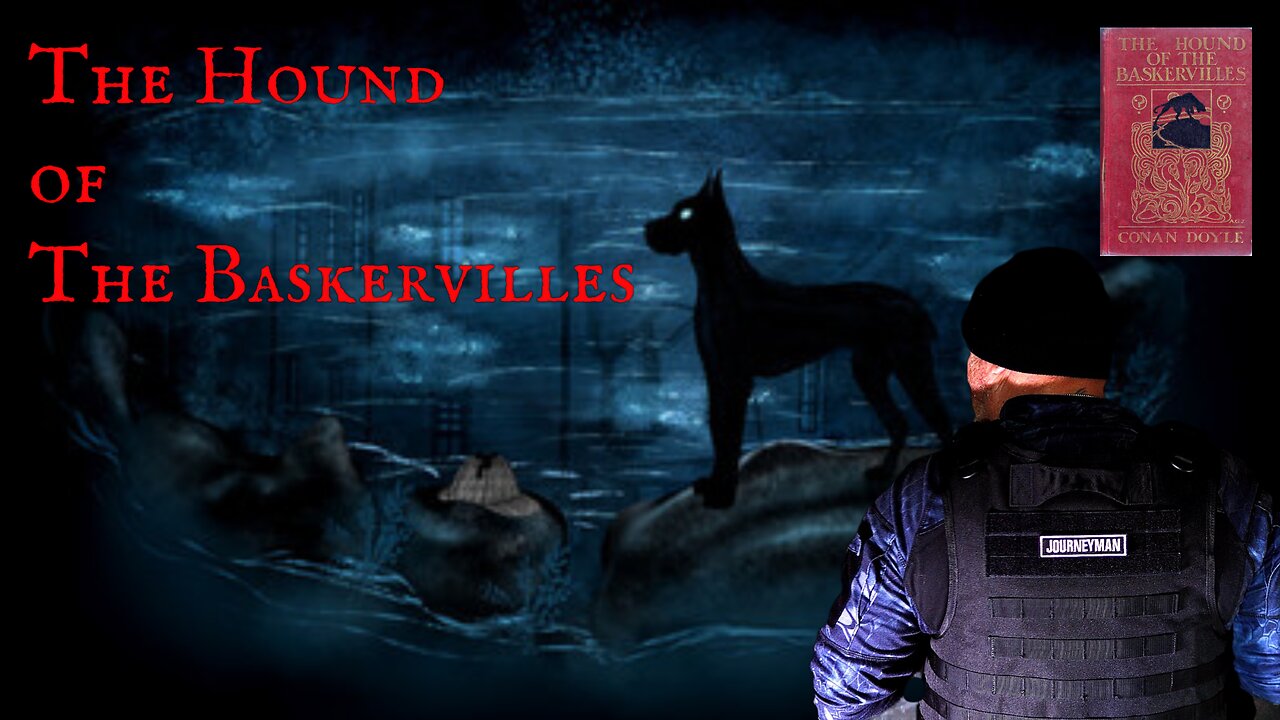Premium Only Content

The Hound of The Baskervilles
Mystery of abandoned burnt-out church where Satanic rituals took place
One of Devon's most historic churches was razed to the ground - but were Satanists behind the arson attack?
"Mr Holmes, they were the footprints of a gigantic hound!”
The church graveyard was was the burial place of sinister squire Richard Capel – or Cabell – whose monstrous behaviour inspired Sir Arthur Conan Doyle, creator of Sherlock Holmes, to write The Hound of the Baskervilles.
Cabell was alleged to have got away with the murder of his wife in the 1600s after making a pact with the devil for his soul. The people of Buckfastleigh feared him and his pack of vicious hunting dogs when he was alive. His death, on July 5, 1677, did not halt their fear and legend had it that on the night of his internment a “phantom pack of hounds” came baying across the moor to howl at his tomb.
From that moment hence, legend had it that each year on the anniversary of his death he could be found leading this phantom pack across the moor and if they weren’t out hunting, the pack could be found ranging around his grave, howling and shrieking.
Conan Doyle, who had worked as a doctor in Durnford Street, Plymouth, incorporated the legend into his famous book, which told of a diabolical hound of supernatural origin who killed Sir Hugo Baskerville after he abducted and murdered a woman in the mires of Dartmoor. The family was then cursed for evermore.
The tomb of Cabell remains and his coffin was secured beneath a heavy stone, over which a solid alter tomb was placed and then enclosed behind sturdy iron bars – ostensibly to prevent the escape of his mortal – and incorporeal – form.
-
 1:12:20
1:12:20
Kim Iversen
3 hours agoThe Measles Moment – Should We Give Up on RFK Jr.? | Trump Flips the Script on Netanyahu
65.4K72 -
 LIVE
LIVE
LFA TV
7 hours agoA ‘Mart of Nations’ Against America | TRUMPET DAILY 4.8.25 7PM
214 watching -
 LIVE
LIVE
SpartakusLIVE
6 hours agoGames w/ StoneMountain64, ON1C, & Aculite || ULTIMATE Warzone Squad
263 watching -
 LIVE
LIVE
Quite Frankly
6 hours ago"Mixed News, Sensitivity Training, Calls & Extras" ft. Chrissie Mayr 4/8/25
631 watching -
 1:35:24
1:35:24
vivafrei
6 hours agoSCOTUS Rules for Trump? Kind Of... Market Bloodbath That Wasn't... Canadian Tyranny Updates & MORE!
104K81 -
 1:19:20
1:19:20
Dr. Drew
7 hours agoDEI Discrimination Is Finally Illegal, So Its Promoters Are Hiding Under New Names w/ Adam Coleman & Tommy Carrigan – Ask Dr. Drew
13.9K4 -
 31:44
31:44
CatfishedOnline
6 hours agoWoman Will NOT Believe Her Internet Boyfriend Is A Romance Scammer!
5.28K2 -
 14:23
14:23
BlackDiamondGunsandGear
1 day agoCanik METE Mc9 / Should You EDC it?
3522 -
 1:21:41
1:21:41
Redacted News
3 hours ago"This is war!" Trump and China on a collision course with 104% tariffs, Iran and US in direct talks
66.5K79 -
 46:39
46:39
Candace Show Podcast
3 hours agoCOMPROMISED: RFK Jr. And Hollywood Exposed | Candace Ep 173
53.5K132